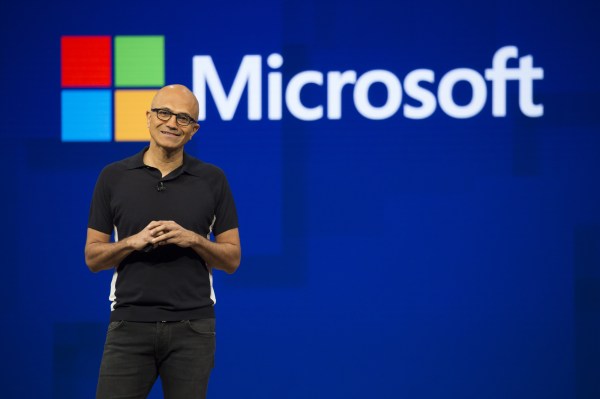Any sitting CEO’s book about his own company is likely to be a bit of a disappointment. It’s no surprise then that Satya Nadella’s Hit Refresh, which officially launched at Microsoft’s Ignite conference today and which is now available from your favorite purveyors of physical and digital books, isn’t the most satisfying read. While it offers a few tantalizing glimpses inside the company and how Nadella changed its culture, too much of it feels like it was written by committee.
I fully admit that my own expectations may have been wrong. I was hoping for more insight into the company’s inner workings, for example, but what we get with Hit Refresh is a somewhat odd mix of memoir and business text, combined with a collection of forward-looking essays on artificial intelligence, quantum computing, security and the future of work.
Nadella is known for being a private person, and that clearly shows in his writing. For the first time (at least that I’m aware), he fully opens up about his special needs children, the death of his mother, how he met his wife and his experience as an immigrant in America, for example. Those are some of the most poignant moments in the book, and they are well worth reading, simply because they give us insight into why Microsoft’s new CEO is putting such an emphasis on accessibility, for example.
The focus of the book, though, is on changing Microsoft’s culture. That’s the part that’ll likely do well in business schools, as what Nadella has achieved at Microsoft over the last few years is nothing short of miraculous. Nadella draws a clear line from what he learned over his years of moving up the Microsoft ladder, too (though I could’ve done without the cricket references because I still don’t understand those), especially during the time he was working on what would later become Microsoft Azure.
Too often, though, even in these strong parts of the text, things at Microsoft just happen. People get hired, projects launch and the culture at Microsoft improves (growth mindset!). Indeed, many of the key players in Microsoft’s executive team also regularly feature in the book — but we learn almost nothing about them except their names and roles. Competitors, too, barely figure in the book, with the exception of AWS, which obviously played a key role in Nadella’s own path at Microsoft.
Now don’t get me wrong. There are some interesting tidbits here. Nadella talks about how he voted against the Nokia acquisition (which happened shortly before he became CEO), for example. But the acquisition of LinkedIn for $26 billion gets just over a page of exposition and Nadella lets LinkedIn CEO Jeff Weiner explain the deal by quoting an interview with Re/Code’s Kara Swisher. “You look at how Microsoft is increasingly becoming more agile, more innovative, more open, more purpose driven. And that played a big role in this.” Sure — but why did Microsoft buy LinkedIn instead of partnering with the company? Nadella surely seems to be far more willing to talk about buying Minecraft than LinkedIn.
Unsurprisingly, the last part of the book — Nadella’s essays on trust after Snowden, “The Future of Humans and Machines” and “Restoring Economic Growth for Everyone” — are probably the most interesting sections. He calls for modernizing the laws around privacy and technology to adapt to modern technology and for new frameworks that govern how digital evidence can be collected that still respect borders but also recognize the global nature of how information now flows, for example. He looks at what we’ll need to focus on if we, as humans, want to stay “relevant” (empathy, education, creativity, judgement and accountability) and how AI can scale to benefit everyone.
In all of this, though, Nadella and his co-writers are clearly trying not to stir up too much trouble (President Trump barely gets a mention, for example). If you follow along with Microsoft’s progress and have watched a few of Nadella’s recent keynotes, you won’t find much new in Hit Refresh. If you, however, really want to learn about how his thoughts about changing Microsoft’s internal culture evolved and don’t mind that there aren’t many details then this is the book for you. If you want more, you’ll have to wait for another book.

